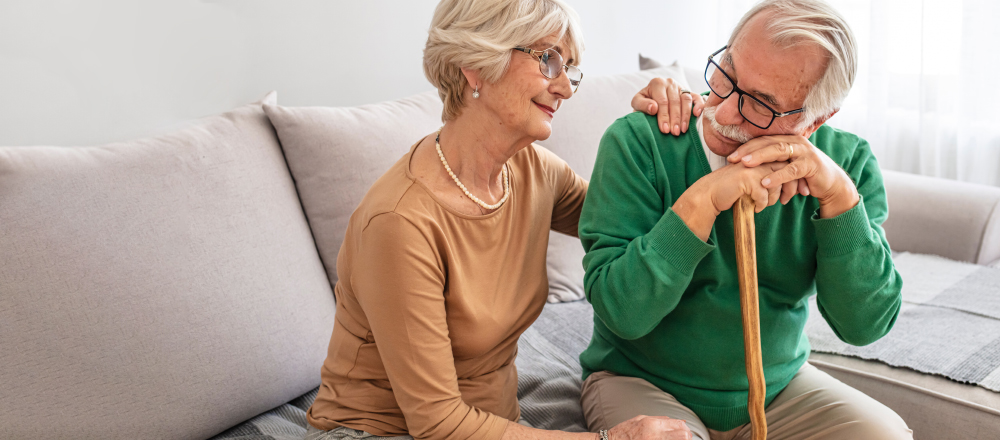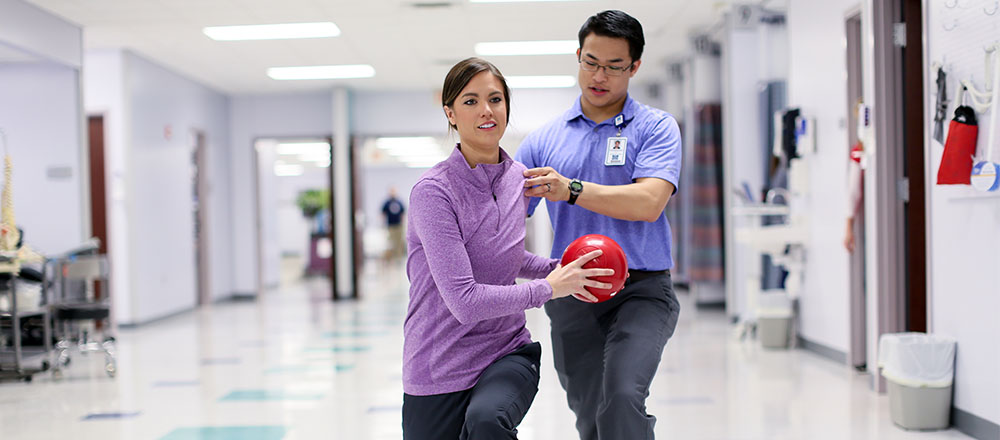Ease Your Hip and Knee Pain Without Surgery
September 14, 2021By: Dustin Woyski DO
Categories: Live Healthy, Orthopedic

Hip and knee pain feels debilitating, frustrating and confusing. It can keep you from doing everyday activities, playing sports and exercising. Some movements worsen your pain. It affects all ages.
When you come to my office, my goal is to determine the source of your pain, so we can review possible treatments. There are many nonsurgical options to help ease your hip or knee pain, and we try to exhaust those prior to considering joint replacement surgery.
Pain Relief Treatments
Connect With an Orthopedic Surgeon
Our team of orthopedic surgeons, certified nurses and therapists work together to give you the best possible outcome. The orthopedic and spine program includes more than 50 specialties, 30 surgeons from six separate clinics and 20 departments all coming together as one team.
In-Office
During an office visit, I do a physical exam, gather your medical history and typically will order X-rays. I also try to gain an understanding of your pain to develop a plan to treat its cause. We talk about the location and degree of your pain and activities that cause or worsen your pain. If surgery is not necessary, we have several in-office treatment options:
- Nonsteroidal anti-inflammatory drugs: To decrease inflammation, first try over-the-counter medicines. They come as generic ibuprofen or in brand-name form. I often prescribe either Celebrex® or Mobic® because they last longer than OTCs.
- Topical anti-inflammatories: If your pain is outside your joint, a topical anti-inflammatory can penetrate the skin for relief. If you are prone to stomach upset or at risk for heart disease, they are a good alternative to oral NSAIDs.
- Injections:
- Cortisone: Corticosteroid injections relieve pain and inflammation caused by arthritis or bursitis. The injections target a specific area or joint. They usually work within a few hours to days, but they may take up to seven days to take effect.
- Platelet-rich plasma: PRP is a new type of injection for joint, muscle or tendon pain, but it is well-researched. We draw your blood and spin it to a concentrate. The resulting plasma is rich in healing platelets and injected into your area of pain. Studies show patients do well if not better with PRP than steroid injections and can be a safe alternative to patients who cannot tolerate steroids or young patients whose cartilage is pristine.
- Viscosupplementation: This involves injecting a synthetic joint fluid into the joint. It’s a good option if other treatments have not worked and you want to avoid surgery. If effective, you can repeat treatment in six months or so.
- Physical therapy: A key part of treatment is to start physical therapy early, whether on land or in the pool. If you have tendinitis or arthritis, are about to have surgery, have had surgery or are experiencing something else, physical therapy can relieve your pain and gain long-term mobility. Our physical therapy services do not require a physician referral. To schedule a therapy appointment at any of our locations, call 816.691.1795.
Move Plus
Learn how the North Kansas City Hospital Move Plus Physical Therapy Clinic can help improve your mobility and reduce back and spine-related pain.
On Your Own
You are a big part of helping improve your joint health with these pain-reducing methods:
- Exercise: I encourage my patients to get 30 minutes of moderate exercise (makes you sweat) five times a week or a total of 150 minutes each week. If running is painful, bicycling, getting on an elliptical machine or swimming may lessen your joint pain.
- Weight loss: Being overweight puts stress on your joints. Losing weight decreases that stress. A word of caution: Losing weight and doing nothing else will not rid all your joint pain.
- Healthy diet: Several studies show a Mediterranean or plant-based diet, those rich in fish oil, and ones containing cancer-fighting vegetables help reduce joint pain and decrease inflammation.
- Turmeric: If you cannot take NSAIDs because you’ve had a gastric or heart procedure or are on blood thinners, try turmeric. A plant related to ginger, it has great anti-inflammatory benefits. You can add it to scrambled eggs, roasted vegetables, rice, soups and greens, or get it in pill form.
- Mindfulness meditation: Mindfulness meditation can play a role in the way you handle pain. A few studies show it decreases the perception of pain and increases function. You can use an app or a website to get started. A few are Headspace, Calm and 10 Percent Happier.
I encourage you to consult your primary care provider, especially if you are taking an NSAID.
Here more from Dr. Woyski, orthopedic surgeon with Northland Orthopedics & Sports Medicine, during his Lunch & Learn.
Knee and Hip Pain Causes
Knee
The cause of knee pain can be due to:
- Arthritis
- Ligament and meniscus ruptures and tears
- Muscle tendonitis
- Misalignment
- Instability
- Weakness
Depending on the cause, symptoms can be:
- Buckling or locking feeling
- Difficulty withstanding weight and walking without pain
- Decreased flexibility
- Limping
- Loose joint
- Loud popping with sudden and severe pain
- Stiffness
- Swelling
- Tenderness
- Pain
- Trouble bending and straightening the knee
- Worsening pain with activities
Hip
The cause of hip pain can be due to:
- Abnormally shaped anatomy
- Arthritis
- Instability
- Labral and muscle tears
- Weakness
Depending on the cause, symptoms can be:
- Balance and posture issues
- Buttock, hip joint, front of thigh and groin pain
- Discomfort when bending or sitting for long periods
- Hip, knee and back pain
- Limping
- Pain when sitting and walking
- Popping, grinding, locking and grinding sensation
- Stiffness
- Uncomfortable sleeping on affected side
Explore More
Managing Pain Without Medication (Video)
Moovin’ & Groovin’: Move plus Physical Therapy (Video)
Preparing for Total Joint Replacement (Video)



